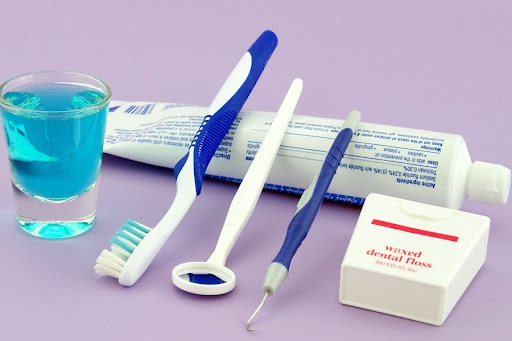The Role of Genetics in Children’s Tooth Decay: Is It Hereditary?

Tooth decay is a common concern for many parents, and while diet and oral hygiene are often the primary focus, genetics can also play a significant role in a child’s susceptibility to cavities and other dental issues. Understanding the hereditary aspects of tooth decay can help parents take proactive steps to mitigate risks and promote better oral health for their children. This article explores the connection between genetics and tooth decay, and how much influence heredity has on a child’s dental health.
Understanding Tooth Decay: A Multifactorial Problem
Tooth decay, also known as dental caries, is a multifactorial disease influenced by a combination of factors including diet, oral hygiene, fluoride exposure, and genetics. It occurs when the enamel—the hard, outer layer of the teeth—is damaged by acids produced by bacteria in the mouth. These acids are typically the result of bacteria feeding on sugars from food and drinks, leading to the gradual breakdown of the tooth structure.
While poor oral hygiene and dietary choices are well-known contributors to tooth decay, the role of genetics should not be overlooked. Some children may be more prone to cavities due to genetic factors that influence various aspects of oral health.
How Genetics Can Influence Tooth Decay
- Tooth Enamel Strength and CompositionGenetics can determine the strength and composition of tooth enamel, which is the first line of defense against decay. Some children may inherit weaker or thinner enamel, making their teeth more susceptible to acid attacks and cavities. Variations in enamel mineral content, influenced by genetic factors, can affect how resistant teeth are to decay.
- Saliva Production and CompositionSaliva plays a crucial role in protecting teeth by neutralizing acids, washing away food particles, and providing essential minerals that help remineralize enamel. Genetic factors can influence the quantity and quality of saliva a person produces. Children who produce less saliva or have a different composition of saliva may be at a higher risk for tooth decay, as their mouths are less effective at combating bacterial acids.
- Shape and Alignment of TeethThe shape, size, and alignment of teeth can also be influenced by genetics. Teeth that are crowded, have deep grooves, or are misaligned can be harder to clean effectively, creating more opportunities for plaque to build up and cause decay. Inherited traits such as a higher prevalence of deep pits and fissures on the chewing surfaces of molars can increase a child’s risk of developing cavities.
- Immune System FunctionThe body’s immune response plays a role in managing the bacteria that cause tooth decay. Genetic variations can affect how effectively a child’s immune system controls the growth of harmful oral bacteria. A less robust immune response can lead to higher levels of decay-causing bacteria in the mouth, increasing the risk of cavities.
- Taste Preferences and Dietary ChoicesInterestingly, genetics can also influence taste preferences, which in turn can affect dietary choices that impact dental health. For example, a genetic predisposition to prefer sweet or carbohydrate-rich foods can lead to more frequent consumption of sugary snacks and drinks, elevating the risk of tooth decay.
Is Tooth Decay Entirely Hereditary?
While genetics can play a significant role in determining a child’s susceptibility to tooth decay, it is important to recognize that environmental factors and personal habits are equally, if not more, influential. Genetics may predispose a child to certain risk factors, but lifestyle choices, such as diet and oral hygiene practices, are critical in determining the actual development of cavities.
Mitigating Genetic Risks: Practical Tips for Parents
Even if genetics predispose your child to a higher risk of tooth decay, there are several proactive steps you can take to minimize this risk and promote healthy teeth:
- Prioritize Good Oral HygieneRegardless of genetic factors, maintaining excellent oral hygiene is crucial. Ensure that your child brushes their teeth twice a day with fluoride toothpaste and flosses daily to remove plaque from between the teeth. Regular brushing and flossing help reduce the bacterial load in the mouth, minimizing the risk of decay.
- Monitor Diet and Limit Sugary FoodsLimit your child’s consumption of sugary and acidic foods and beverages, which can erode enamel and feed harmful bacteria. Encourage a balanced diet rich in fruits, vegetables, whole grains, and dairy products, which support overall and dental health.
- Schedule Regular Dental VisitsRegular dental checkups are essential for monitoring your child’s oral health and catching potential problems early. Dental professionals can provide cleanings, apply fluoride treatments, and offer personalized advice based on your child’s specific needs and risk factors.
- Consider Preventive TreatmentsDiscuss preventive options with your child’s dentist, such as dental sealants, which can protect the grooves and pits in molars from decay. Fluoride treatments can also strengthen enamel and provide an additional layer of protection against cavities.
- Encourage Good Saliva FlowEncourage your child to drink plenty of water and chew sugar-free gum, which can stimulate saliva production and help maintain a healthy pH balance in the mouth. Saliva is a natural defense against tooth decay, helping to wash away food particles and neutralize acids.
- Educate on the Importance of Oral HealthTeaching your child about the importance of taking care of their teeth can empower them to make better choices. Use age-appropriate resources, such as educational videos, books, or fun activities, to make learning about oral health engaging and relatable.
Conclusion
While genetics can influence a child’s susceptibility to tooth decay, it is not the sole determining factor. Understanding the role of hereditary traits can help parents take targeted actions to protect their child’s teeth. By prioritizing good oral hygiene, monitoring dietary habits, and maintaining regular dental visits, you can significantly reduce the impact of genetic risk factors and help your child maintain a healthy, beautiful smile. Early intervention and consistent care are key to preventing tooth decay, regardless of genetic predispositions.
Related to read:
Best Oral Hygiene Practices For Optimum Oral Health.
Bruxism: Teeth grinding causes treatment and prevention.
How to keep your gums healthy and disease-free?
References
To ensure the information provided is accurate and up-to-date, the following sources were referenced:
- American Dental Association. (n.d.). Plaque and Tartar. Retrieved from ADA website
- Mayo Clinic. (n.d.). Dental Plaque. Retrieved from Mayo Clinic website
- National Institute of Dental and Craniofacial Research. (n.d.). Periodontal (Gum) Disease. Retrieved from NIDCR website










0 Comments on “The Role of Genetics in Children’s Tooth Decay: Is It Hereditary?”